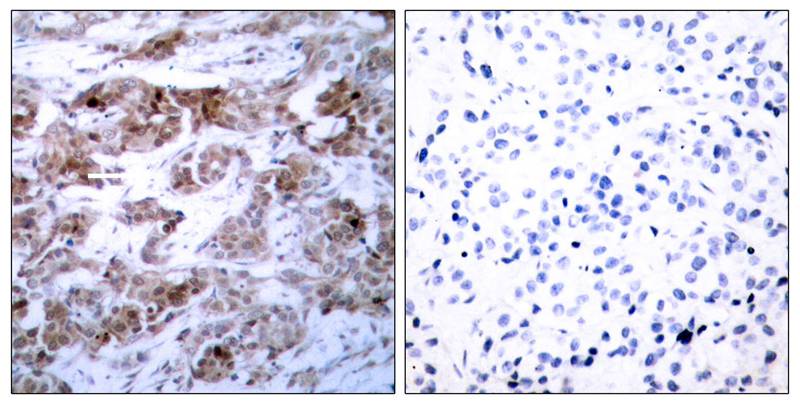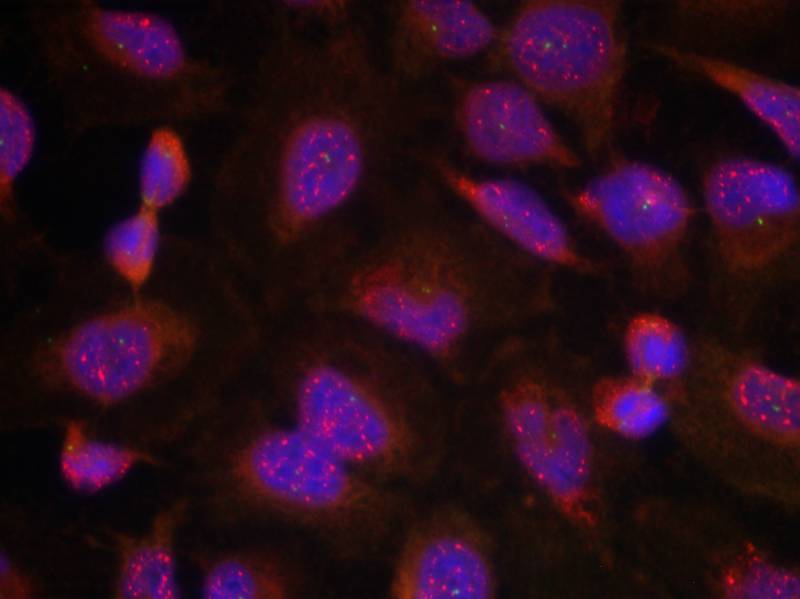Product Detail
Product NameBCL-2(Ab-70) Antibody
Host SpeciesRabbit
ClonalityPolyclonal
PurificationAntibodies were produced by immunizing rabbits with synthetic peptide and KLH conjugates. Antibodies were purified by affinity-chromatography using epitope-specific peptide.
ApplicationsWB IHC IF
Species ReactivityHu
SpecificityThe antibody detects endogenous level of total BCL-2 protein.
Immunogen TypePeptide-KLH
Immunogen DescPeptide sequence around aa.68~72 (R-T-S-P-L) derived from Human BCL-2.
Target NameBCL-2
ConjugateUnconjugated
Other NamesBCL2
Accession NoSwiss-Prot: P10415
NCBI Protein: NP_000624.2
Uniprot
P10415
Gene ID
596;
Concentration1.0mg/ml
FormulationSupplied at 1.0mg/mL in phosphate buffered saline (without Mg2+ and Ca2+), pH 7.4, 150mM NaCl, 0.02% sodium azide and 50% glycerol.
StorageStore at -20°C for long term preservation (recommended). Store at 4°C for short term use.
Application Details
Predicted MW: 26kd
Western blotting: 1:500~1:1000
Immunohistochemistry: 1:50~1:100
Immunofluorescence: 1:100~1:200
Western blot analysis of extracts from MCF cells using BCL-2(Ab-70) Antibody #21060 and the same antibody preincubated with blocking peptide.
Immunohistochemical analysis of paraffin-embedded human breast carcinoma tissue using BCL-2(Ab-70) Antibody #21060(left) or the same antibody preincubated with blocking peptide(right).
Immunofluorescence staining of methanol-fixed Hela cells using BCL-2(Ab-70) Antibody #21060.
BCL-2 encodes an integral outer mitochondrial membrane protein that blocks the apoptotic death of some cells such as lymphocytes. Constitutive expression of BCL2, such as in the case of translocation of BCL2 to Ig heavy chain locus, is thought to be the cause of follicular lymphoma. Two transcript variants, produced by alternate splicing, differ in their C-terminal ends.
Muller IM, et al. (2005) Mol Pharmacol.
Jin Z, Gao F,et al. J Biol Chem 2004 Sep 17; 279(38): 40209-19.
Kumar Biswas S,et al. Mol Cancer Ther 2004 Mar; 3(3): 327-34.
Huang ST,et al. (2002)FASEB J; 16(8): 825-32.
Yamamoto K,et al. (1999) Mol Cell Biol; 19(12): 8469-78.
If you have published an article using product 21060, please notify us so that we can cite your literature.





 Yes
Yes



